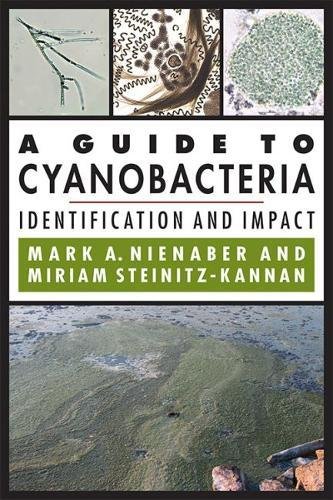Cyanobacteria are a phylum of bacteria (prokaryotes), also known as “blue-green algae“. Until recently this phylum included the unique class of Cyanophyceae or Oxyphotobacteria. These bacteria fix carbon dioxide carbon by photosynthesis and release oxygen.
If you want to get more information about cyanobacteria, then you definitely arrived to the correct place. Making a good choice when looking to acquire a cyanobacteria is not really easy, so we hope that you will make use of this information to make the most informed decision.
Table of Contents
- 1 What is the best cyanobacteria to buy?
- 2 Best Cyanobacteria Reviews
- 3 Offers and Discounts
- 4 Cheap Cyanobacteria
- 5 Buy Cyanobacteria Online
- 5.1 A Guide to Cyanobacteria: Identification and Impact
- 5.2 Chemiclean BOYD CHEMI Clean - CYANO, RED Slime Algae (CYANOBACTERIA) - 2 Gram Powder- 16714
- 5.3 Cyanobacteria: From Basic Science to Applications
- 5.4 Cyanobacteria: Role of Cyanobacteria in Biotechnology
- 5.5 Toxic Cyanobacteria in Water: A Guide to Their Public Health Consequences, Monitoring and Management
- 5.6 Cyanobacteria Biotechnology (Advanced Biotechnology)
- 5.7 Water Treatment for Purification from Cyanobacteria and Cyanotoxins
- 5.8 Cyanobacteria in Symbiosis
- 5.9 Chemi-Clean - 2 g
- 5.10 Ultralife Blue Green Slime Stain Remover
- 6 Best Cyanobacteria 2025
- 7 References
What is the best cyanobacteria to buy?
This is basically the leading selected item of other clients getting products related to cyanobacteria. For further alternatives, take a look at our full catalog of Cyanobacteria or use the search box.
In 2013 a group of bacteria related to the known but non-photosynthetic cyanobacteria was discovered in the human gut and in surface waters. It forms the class Melainabacteria (en), or perhaps a new phylum.
In 2017 a new group was discovered, related to the previous ones but phylogenetically basal, also non-photosynthetic. It forms the class Sericytochromatia, or perhaps a new phylum.
More than 7,500 species of cyanophyceae are known (of which at least 200 may be free, i.e. non-symbiotic and capable of independent life), distributed in more than 150 genera.
The taxa contained in the phylum Cyanobacteria have not been validated by the Bacteriological Code (1990 Revision), except :
- the classes Chroobacteria, Hormogoneae and Gloeobacteria,
- the orders Chroococcales, Gloeobacterales, Nostocales, Oscillatoriales, Pleurocapsales and Stigonematales,
- the families Prochloraceae and Prochlorotrichaceae,
- the genera Halospirulina, Planktothricoides, Prochlorococcus, Prochloron, Prochlorothrix and Rubidibacter.
The species names Crinalium epipsammum De Winder et al. 1991, Microcystis aeruginosa Otsuka et al. 2001, Planktothrix mougeotii Suda et al. 2002 and Planktothrix pseudagardhii Suda and Watanabe 2002 are subsequent to the Bacteriological Code (1990 Revision).
Cyanobacteria, despite a possible superficial and ecological resemblance, are not algae but colonial bacteria. They are mostly filamentous forms of possibly sticky consistency, the majority of which are microscopic. Despite their vernacular name they can take on various colours and are rarely blue. These colours come from the blue (phycocyanins) and red (phycoerythrins) pigments that mask chlorophyll a.
Oxyphotobacteria perform oxygen photosynthesis and can therefore transform solar energy into chemical energy that can be used by the cell by fixing carbon dioxide (CO2) and releasing oxygen (O2). Some of them can under certain conditions fix nitrogen. They are able to consume the organic carbon present in their environment.
There is evidence of CO2 fixation for at least 3.7 Ga, but nothing is known about the organisms that cause it. Cyanobacteria and their ancestors have produced a major ecological upheaval through their release of oxygen into the atmosphere (they are responsible for the Great Oxidation at around 2.45 Ga) and their contribution to the first biological carbon sink and deacidification of the oceans, when they organized themselves into fixed colonies (stromatolites) capable of producing limestone.
Their growing populations, among others in France, favoured by trophic or ecological imbalances (including water eutrophication), pose various problems: obstruction of filtration systems, colouring and sometimes dystrophication of water or anoxia, with secondary metabolites giving a bad taste to the water (geosmin, 2-methylisoborneol, p-cyclocitral…) and some causing serious toxicoses. About forty known species secrete or contain cyanotoxins, which are generally neurotoxins that can cause death in various animals, including humans. These toxins are among the most potent natural poisons known and have no known antidote.
The therapeutic properties of mud baths are believed to be largely due to cyanobacteria. Some species such as spirulina (Arthrospira platensis) are used as a food supplement.
Many individuals have used the cyanobacteria before, and now you can take full advantage of what they have to say about this product. Read more to find out the very best seller products and what the other folks have to state on them.
Best Cyanobacteria Reviews
Watch the following products to learn a little more about cyanobacteria and make a well informed selection.















